
Converting Tamiya's 1/48 scale Beau
Beaufighter Mk.Ic (RAAF)
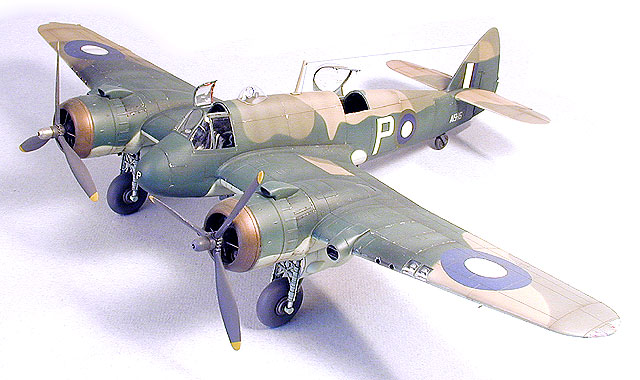
by John Valo

Introduction
This model started off as the Tamiya Beaufighter Mk.VI, which I
backdated to a Mk.I version with the assistance of the KMC resin
cockpit and tailplane upgrade set.
The subject is a 30 Squadron aircraft operating in New Guinea,
circa early 1943. The inspiration for the unique camouflage scheme
was a photo in Kookaburra Technical Publications' 'RAAF Camouflage
and Markings 1939-45, Volume 1'. On page 63, there is a photograph
of two 30 Squadron Beaus flying tight formation over New Guinea.
Both 'P' and 'Q' are decidedly (and modeling-wise, temptingly)
'clapped out', showing extreme weathering and rather non-standard
color demarcations and insignias.
Too good to pass up...

Modifications, Painting
and Markings
Comparing the aircraft in the photograph to various line drawings
and other information, I made a list of the salient features of this
particular Beau. Obvious were the flat tailplanes, observation
blister without gun provision, D/F blister, dual wingtip lights,
short exhausts and short carburetor intakes; all of which, to the
best of my deduction made it a Bristol-built Mk.Ic. A cross-check
with known serial numbers put this aircraft somewhere between A-19-1
and A-19-72, give or take. As far as I could ascertain, this
aircraft would have carried a delivery scheme of Dark Earth and Dark
Green over Sky, with Type A underwing roundels, Type A1 fuselage
roundels and Type B roundels on the upper wings. Judging from the
insignia on the aircraft in the photograph, it appeared a fair match
proportionally, with the Red areas of the insignia overpainted
either in White (roundels) or Dark Green (leading edge of fin
flash), this in addition to the probability of the Yellow ring of
the fuselage insignia also being overpainted in Green.
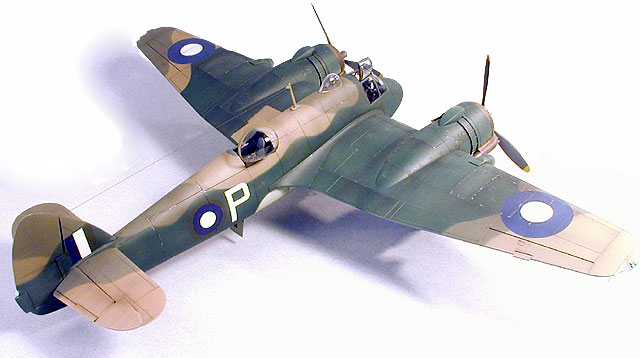
The camouflage was what interested me most, as the lighter areas of
the paint showed the typical pattern of light and dark areas (Dark
Earth and Dark Green, only very faded) as well as a much darker area
covering the nose of the the aircraft and extending back along the
waistline in a jagged demarcation. This particular tone also
extended to the wings and nacelles, ending roughly around the
upperwing roundels. A tell-tale clue was the panel on the upper port
wing (I believe the dinghy stowage) which was decidedly lighter in
tone (faded Dark Earth/Dark Green), which emphasised the depth of
the darker color. Also, immediately beneath the trailing edge of the
wing root, there is a sharply rounded blob of underside color which
is quite bright (Sky). Knowing that at this point in time Foliage
Green was already being used as a camouflage color, and that by
nature Aussies never do anything 'by the book' (sorry Brett and
all...), my interpretation was a sweeping overpaint of Foliage Green
done at a field or depot level.
The Tamiya Beaufighter is a masterpiece of engineering, and a joy to
build. As I became more involved in the building of the model, I
decided to utilize my references and add numerous scratchbuilt
interior details which are now lost to the naked eye.
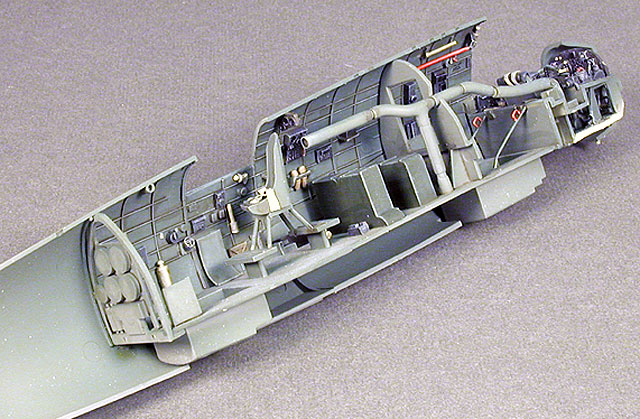
Click the thumbnails below to view larger pictures:

In addition to the KMC cockpit and tailplanes, I added the
Hawkeye Designs smooth-tread resin tire/wheel set. I scratchbuilt
the landing lights on the port leading edge using a technique I have
adopted for most of my British aircraft models. The lights were made
from two styrene discs painted Silver, to which I applied a decal of
the typical 'three-prong-swirly-lamp-holder' which was printed to
size with my laser printer on decal paper. A blob of epoxy each and
a vacuformed cover finished the job.
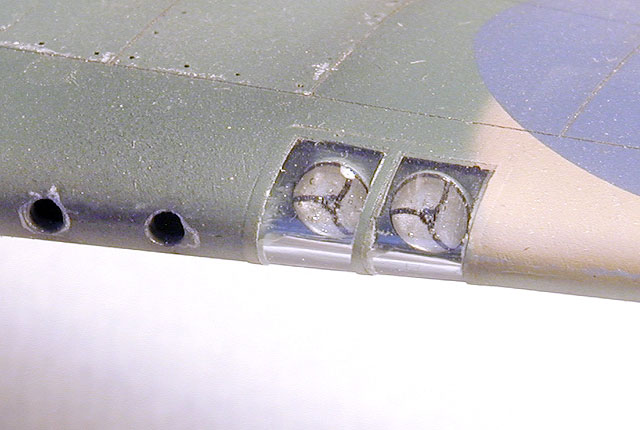
I used the kit cockpit canopy and hatch, and vacuformed the D/F
blister and observer's hatch, each being detailed with various bits
of strip and rod styrene. I also added exhaust pipes from the
cylinders to the collector ring with bits of flexible wire.
The model was painted with PollyScale acrylics, and the roundels
were masked and painted, suitably faded on the upper surfaces. I
scavenged the codes from an Aeromaster sheet, and arbitrarily
assigned the serial of A-19-16, an early Mk.Ic. According to my
references, this machine was delivered in June 1942 and salvaged in
1946. I picked a lucky plane, I guess.

Conclusion
I generally don't try to be a revisionist historian, but it sure
is fun to go out on a limb occasionally.
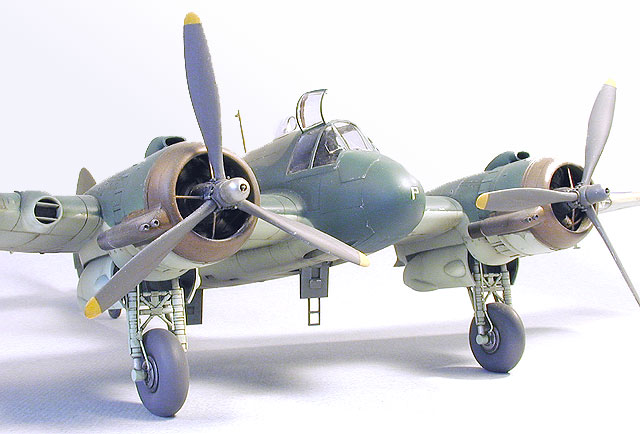
The Tamiya kit is a solid, relaxing build, and I think it looks
the part with its, shall we say, non-standard camouflage.
John C. Valo

More Pictures
Click the thumbnails below to view larger pictures:
Home
What's New
Showcase
Workshop
Products
About Testor
Search
Links